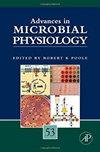基于血液的O2传感器:经验教训和观点。
2区 生物学
Q1 Biochemistry, Genetics and Molecular Biology
Advances in Microbial Physiology
Pub Date : 2017-01-01
Epub Date: 2017-07-06
DOI:10.1016/bs.ampbs.2017.05.001
引用次数: 13
摘要
在过去的15年里,以血液为基础的传感器作为一大家族蛋白质出现在所有生命领域。这些传感器主要负责检测O2, CO和NO的结合,并将连接状态报告给具有酶或大分子结合特性的输出域。无数的生物功能与这些传感器有关,包括血管舒张、细菌共生、趋化性和生物膜形成等。在这里,我们批判性地回顾了在许多方面被广泛研究的几种细菌O2传感系统,重点关注对推进该领域至关重要的经验教训。本文章由计算机程序翻译,如有差异,请以英文原文为准。
Haem-Based Sensors of O2: Lessons and Perspectives.
Haem-based sensors have emerged during the last 15 years as being a large family of proteins that occur in all kingdoms of life. These sensors are responsible mainly for detecting binding of O2, CO and NO and reporting the ligation status to an output domain with an enzymatic or macromolecule-binding property. A myriad of biological functions have been associated with these sensors, which are involved in vasodilation, bacterial symbiosis, chemotaxis and biofilm formation, among others. Here, we critically review several bacterial systems for O2 sensing that are extensively studied in many respects, focusing on the lessons that are important to advance the field.
求助全文
通过发布文献求助,成功后即可免费获取论文全文。
去求助
来源期刊

Advances in Microbial Physiology
生物-生化与分子生物学
CiteScore
6.20
自引率
0.00%
发文量
16
期刊介绍:
Advances in Microbial Physiology publishes topical and important reviews, interpreting physiology to include all material that contributes to our understanding of how microorganisms and their component parts work. First published in 1967, the editors have always striven to interpret microbial physiology in the broadest context and have never restricted the contents to traditional views of whole cell physiology.
 求助内容:
求助内容: 应助结果提醒方式:
应助结果提醒方式:


